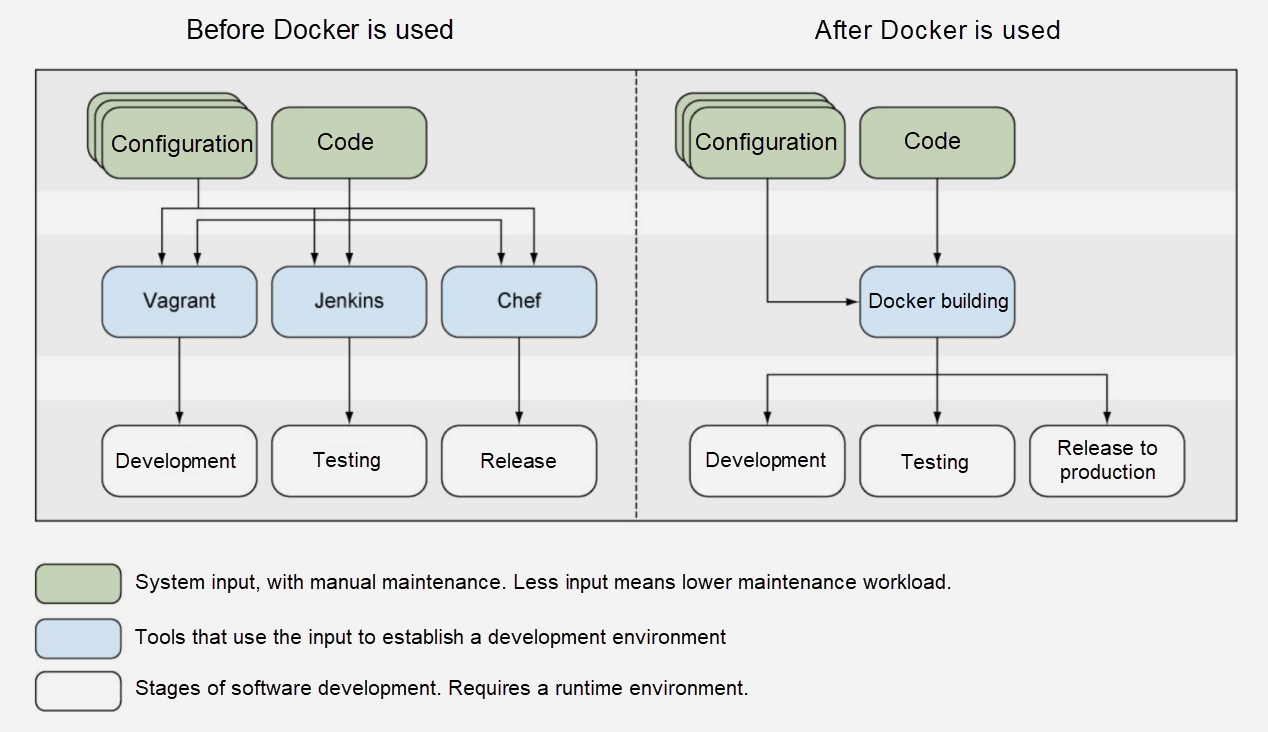
It minimizes wasted developers time, especially when their CI/CD pipelines are parallelized to take advantage of the lightweight container builders that are quick to spawn by the hundreds and as easy to terminate when all tasks have completed.Īs companies containerize their applications, they quickly realize that managing them without automation is time-consuming and inefficient, and surely not scalable. The “builders/slaves” containers will spawn on demand and run all needed builds, sharing the same pool of physical or virtual machines, but running in parallel, greatly shortening the waiting time for all builds and tests to complete. They will share the same hardware, allowing for effective utilization of compute resources and helping to avoid costly overprovision for peak times when all developers run their builds in the afternoon.
#PRICING DOCKER AND KUBERNETES SOFTWARE#
For example, TeamCity or Jenkins worker nodes that run software builds and unit tests, can be created and destroyed on demand within seconds after new code was pushed to a repository. One of the common use cases are CI/CD systems and their “builders”/ “slave nodes”. Most enterprises run at least some workloads in containers, even if not yet in production.


Though not yet widely adopted, usage is rapidly increasing. By isolating processes and underlying filesystems, they eliminate dependency hell and allow for portability-yet another IT revolution. While sharing the same host kernel, containers require less overhead and are much more lightweight than VMs. The cloud-enabled companies to easily and safely share computing capacity while ensuring complete separation in multi-tenant public clouds that reside on the same hardware-a revolution! Containers, the new VMsĪround 2006, support for containers in the Linux Kernel was introduced and expanded over the years. This ability set the stage for private and public clouds like AWS, Rackspace, Azure, Google Cloud, etc. Between 2001-2010, virtualization technologies such as Xen, VMware ESXi, and KVM became popular allowing server administrators to share workloads of different operating systems on the same hardware servers, yet stay fully isolated. There was no way to share server resources for different applications. Virtualization: From one server per app to multi-tenancyīetween 1995-2001, running any web server-whether Apache for PHP or Tomcat for Java or any other business software for that matter-required a fully dedicated hardware server. To better understand the importance and context of the orchestration layer, recall what led to the creation of container technology, and why the developer community embraced Docker so enthusiastically. This is where automation, in the form of Kubernetes, comes in. Maintaining these static configuration management playbooks and manifests (or worse, custom Python/Ruby/Shell scripts) is troublesome, error-prone, and a waste of valuable and limited engineering team resources. All these tools provide support for container creation, configuration, and lifecycle management.īut should you maintain your own fleet of servers for hundreds of containers using Ansible playbooks, Chef recipes, or docker-compose manifests? In short – you don’t want to. Docker containers are deployed manually with a “docker run” command or with a tool like Ansible, Chef, docker-compose or any other non-cloud-native configuration management software.

For us, that means the deployment of containers without a centralized orchestration engine. Vanilla Docker vs Kubernetes Orchestrated Docker Containersīefore we answer the central question, it may be helpful to cover a bit of the basics and some industry history to understand how each technology relates. Do you need Docker if you have Kubernetes? We can clearly spell it out for you-it all comes down to the level of complexity you are dealing with. Docker and Kubernetes platforms are a hot topic, yet there still seems to be some confusion about how they relate to one another.


 0 kommentar(er)
0 kommentar(er)
